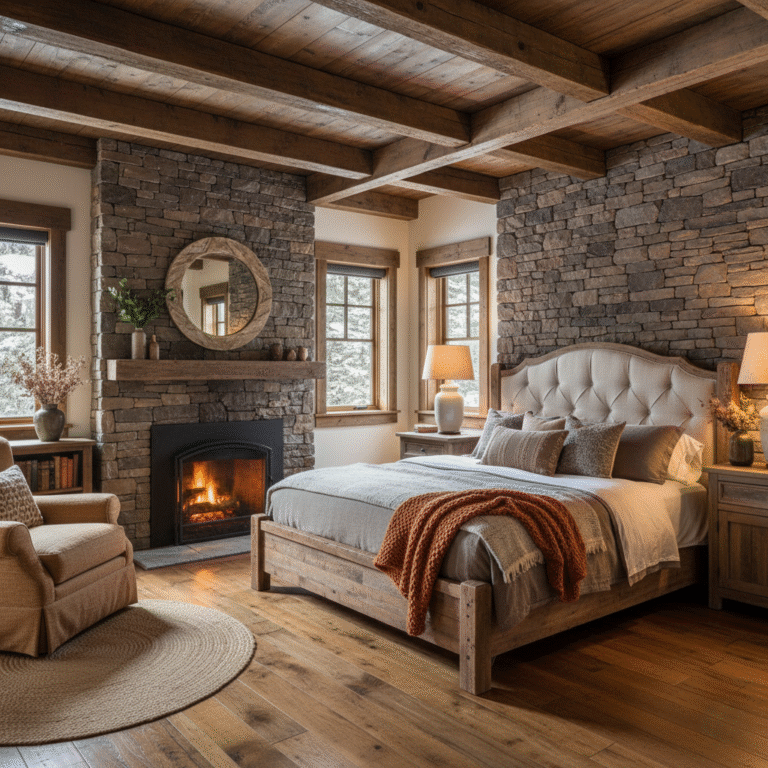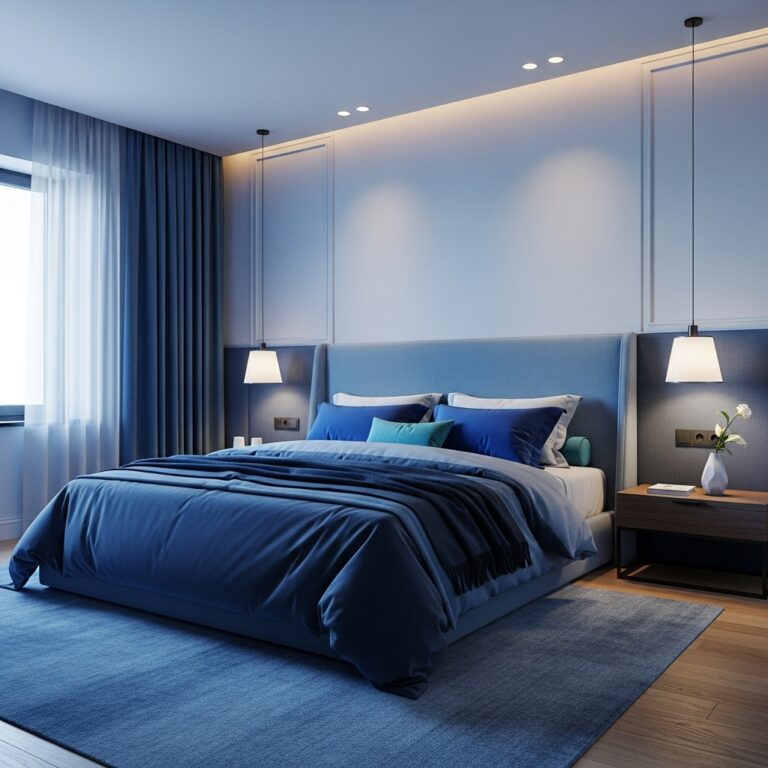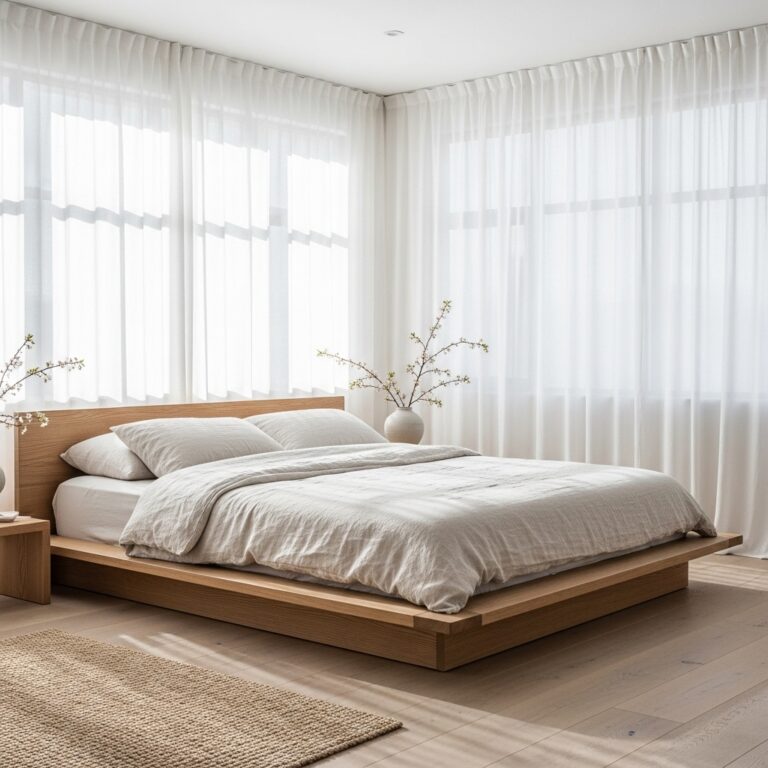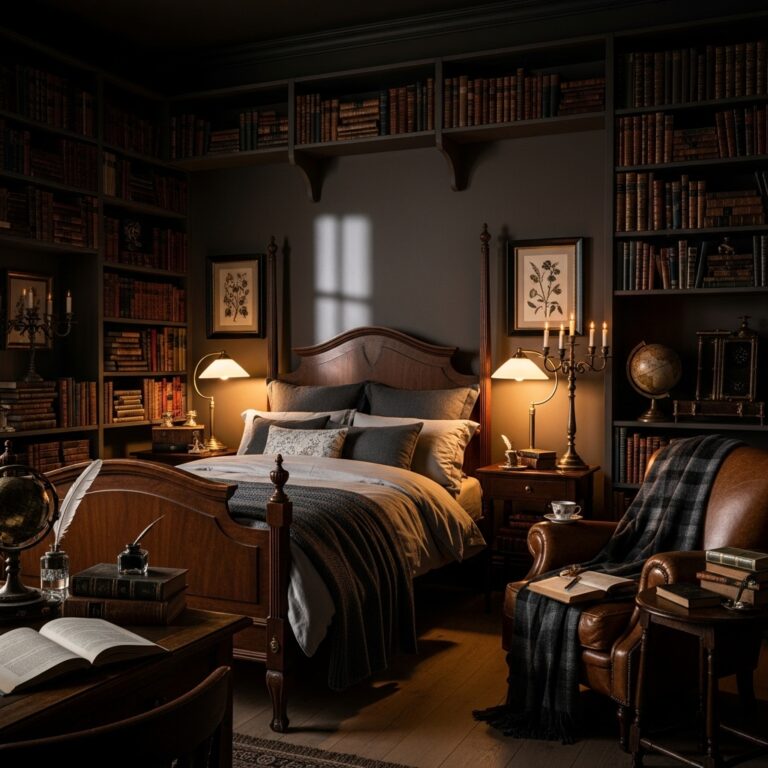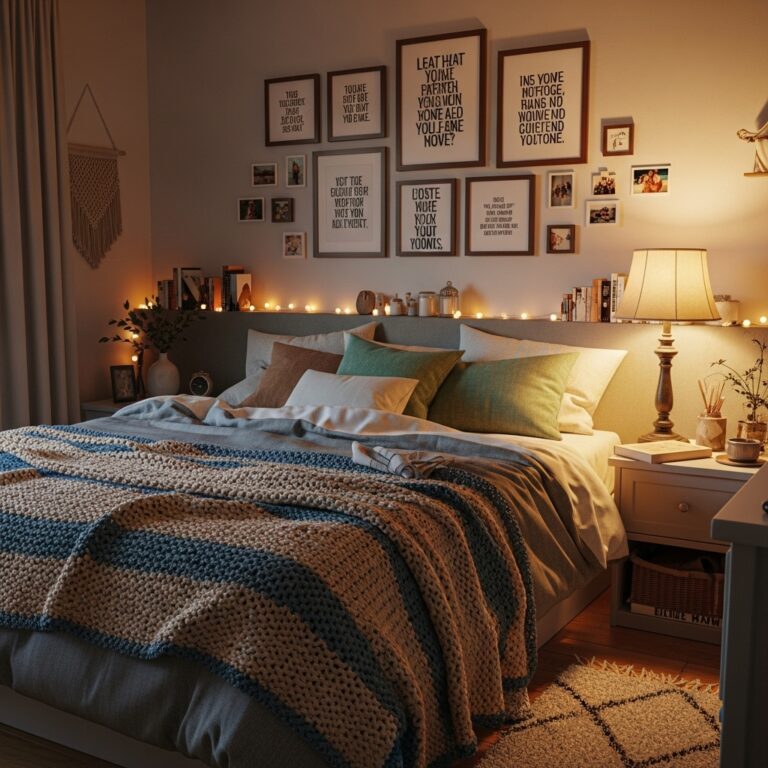13 Bedroom Color Schemes Ideas For A Stylish And Relaxing Space
This post may contain affiliate links. If you make a purchase through one of my links, I may receive a small commission at no cost to you.
Choosing the right bedroom color scheme can shape how a space feels every day. Colors influence mood, comfort, and even how large or small a room appears. The right combination creates a balanced atmosphere that feels both personal and inviting.
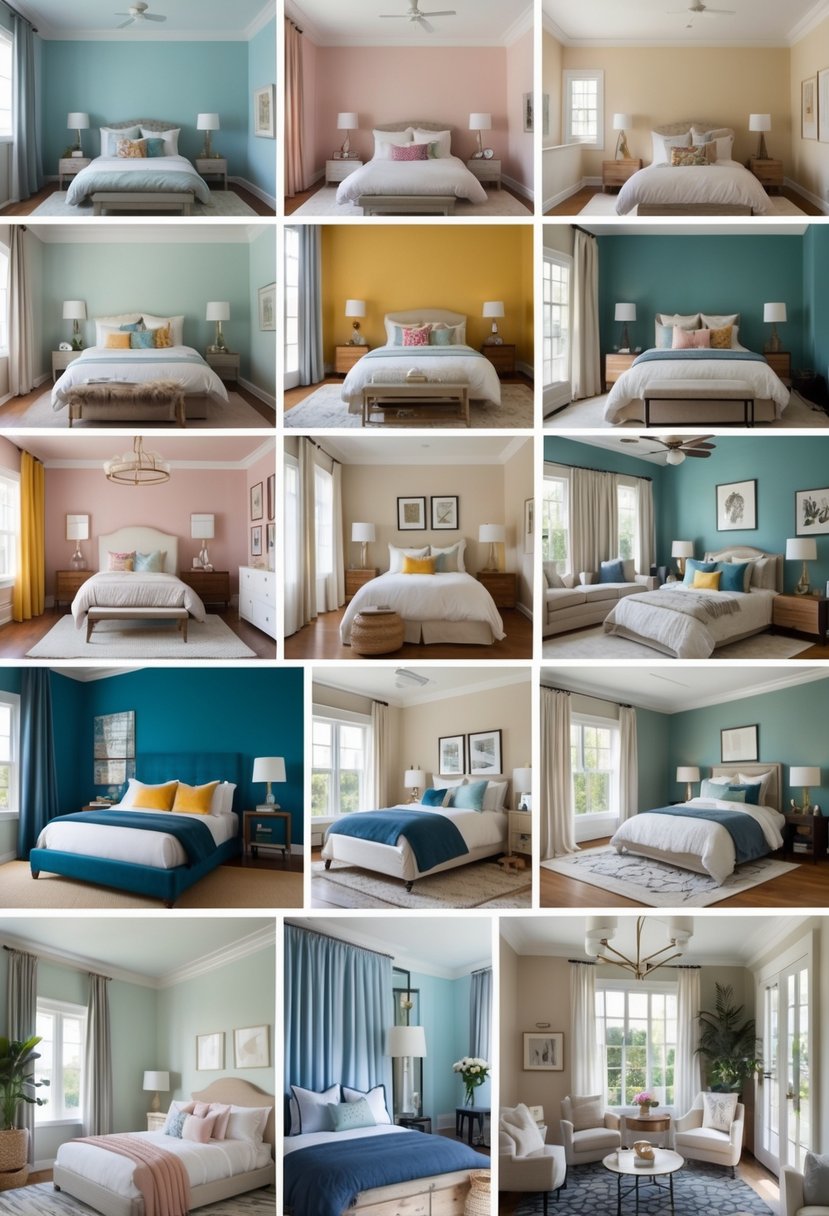
This article explores 13 different color pairings that suit a variety of styles, from soft and calming palettes to bold and dramatic contrasts. Along the way, it also looks at how lighting and room size affect color choices, as well as how certain shades can influence mood and energy.
Bedroom Color Schemes Ideas
1) Soft Gray and White for a Calm Ambiance Color Schemes
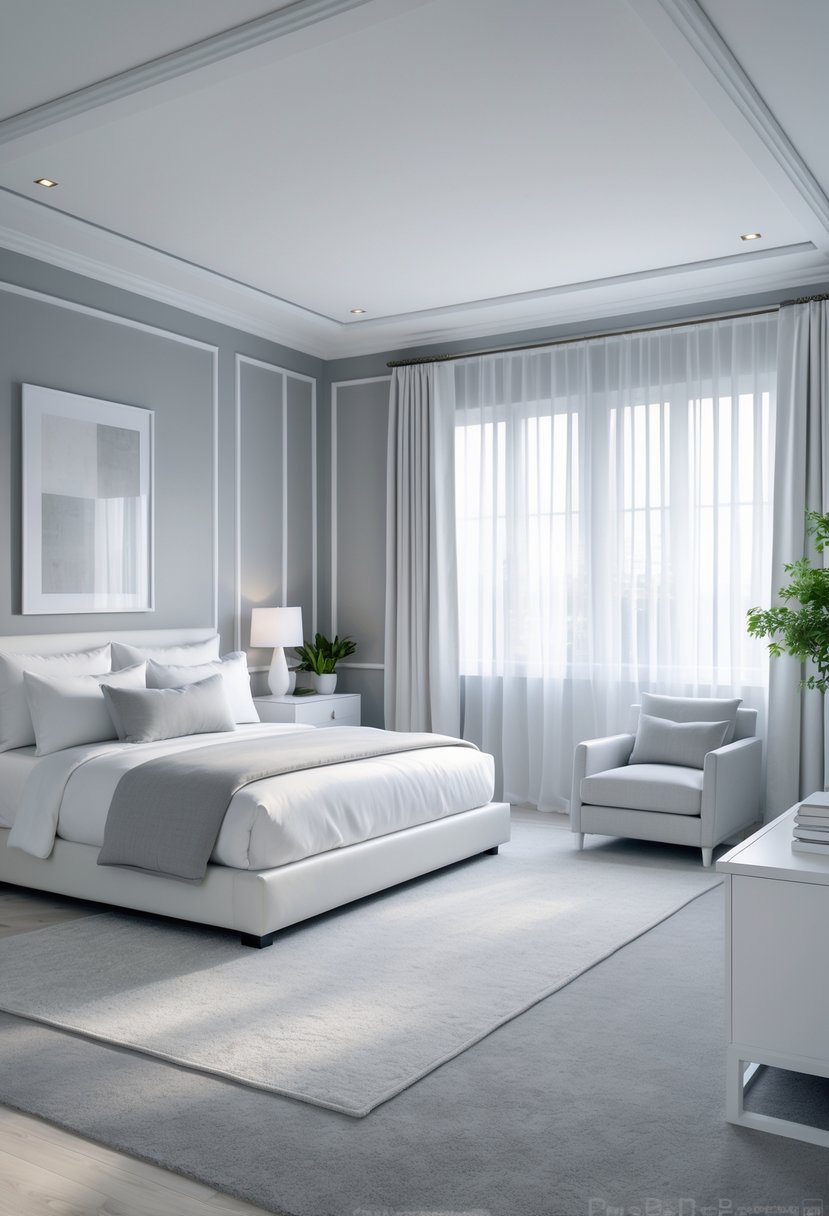
Soft gray and white create a balanced look that feels simple and clean.
These shades work well together because gray adds depth while white keeps the space light.
The combination helps bedrooms feel calm without looking plain.
2) Navy Blue and Taupe for Elegant Warmth Bedroom Color Schemes Ideas
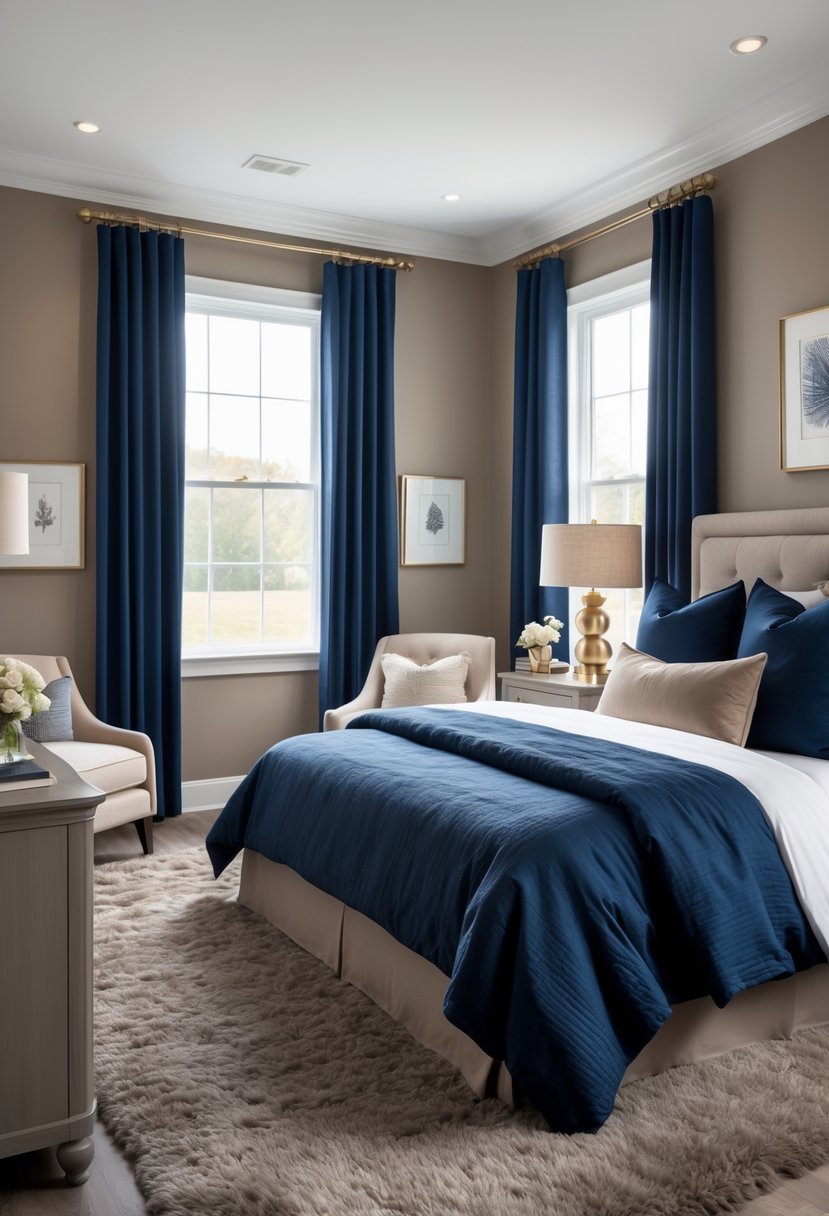
Navy blue adds depth, while taupe introduces soft warmth. Together, they create a balanced bedroom palette.
This pairing works well with wood accents and simple textures.
Bedroom Color Schemes You get from here.
3) Sage Green and Cream for Natural Serenity Bedroom Color Schemes
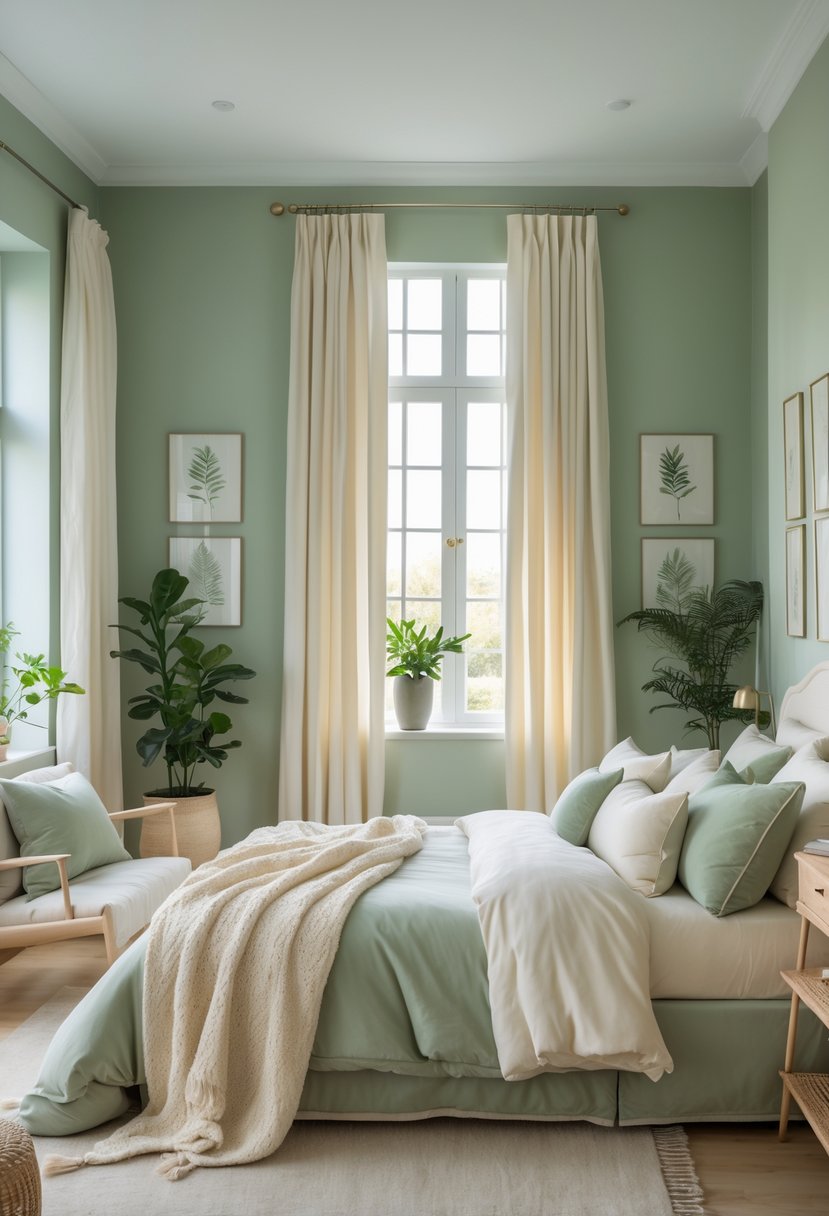
Sage green adds a soft, natural touch that feels calm and balanced. Cream tones keep the space bright and welcoming.
Together, these colors create a simple, restful bedroom atmosphere.
4) Blush Pink and Charcoal for Modern Romance Bedroom Color
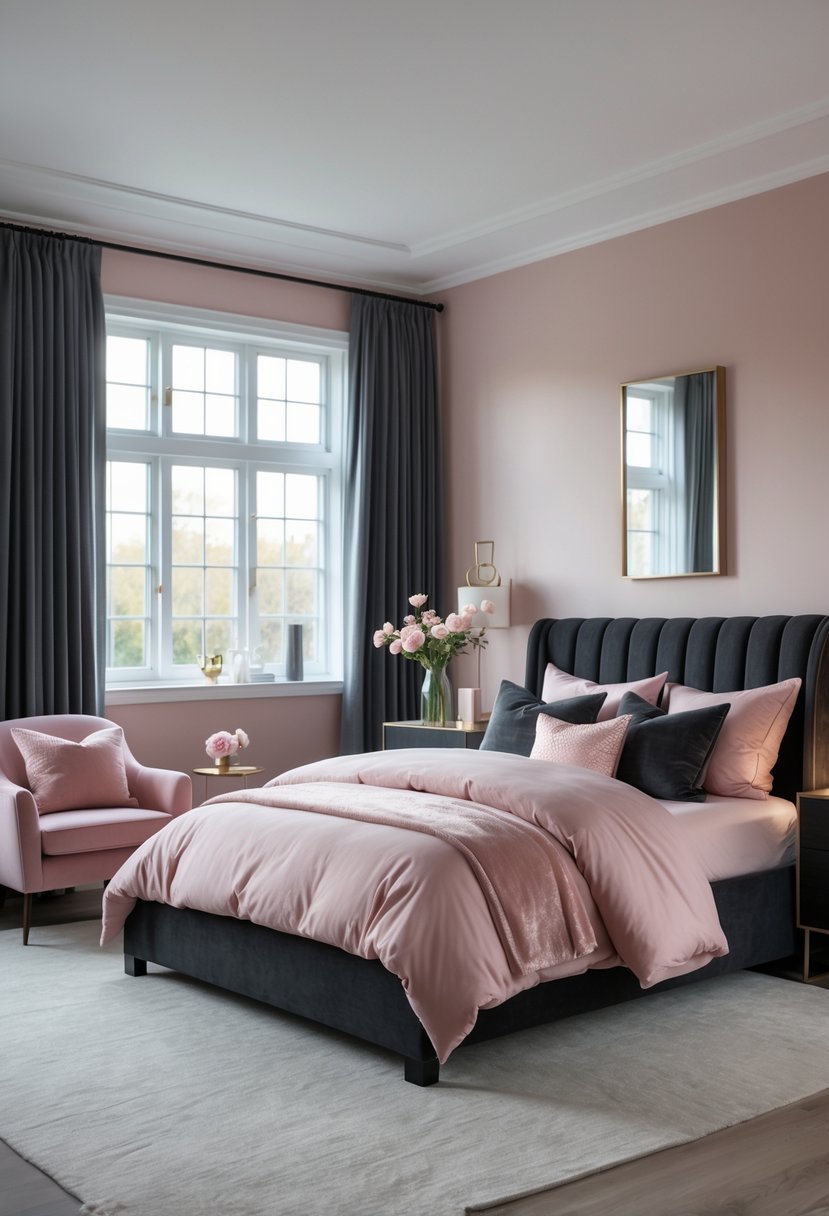
Blush pink softens the strong presence of charcoal, creating balance in the bedroom.
They can use charcoal walls with blush accents for a clean, modern look.
Textiles like curtains, bedding, or rugs in blush add warmth against darker furniture.
5) Deep Teal and Mustard for Bold Contrast Bedroom Color Schemes Ideas
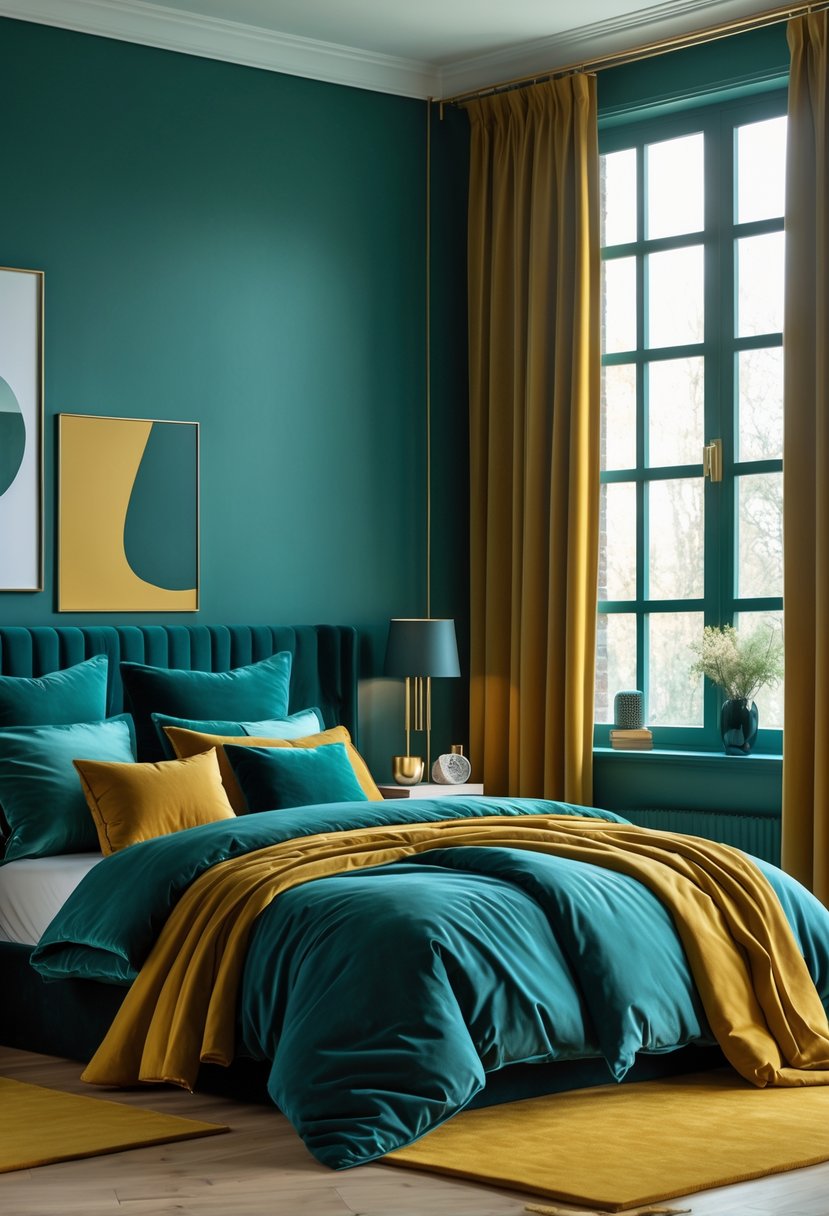
Deep teal adds calm depth, while mustard introduces warmth. Together, they create a strong balance that feels modern and inviting.
This pairing works well through bedding, pillows, or accent walls. Small touches of mustard against teal backgrounds can highlight the contrast without overwhelming the room.
6) Warm Beige and Terracotta for Earthy Comfort
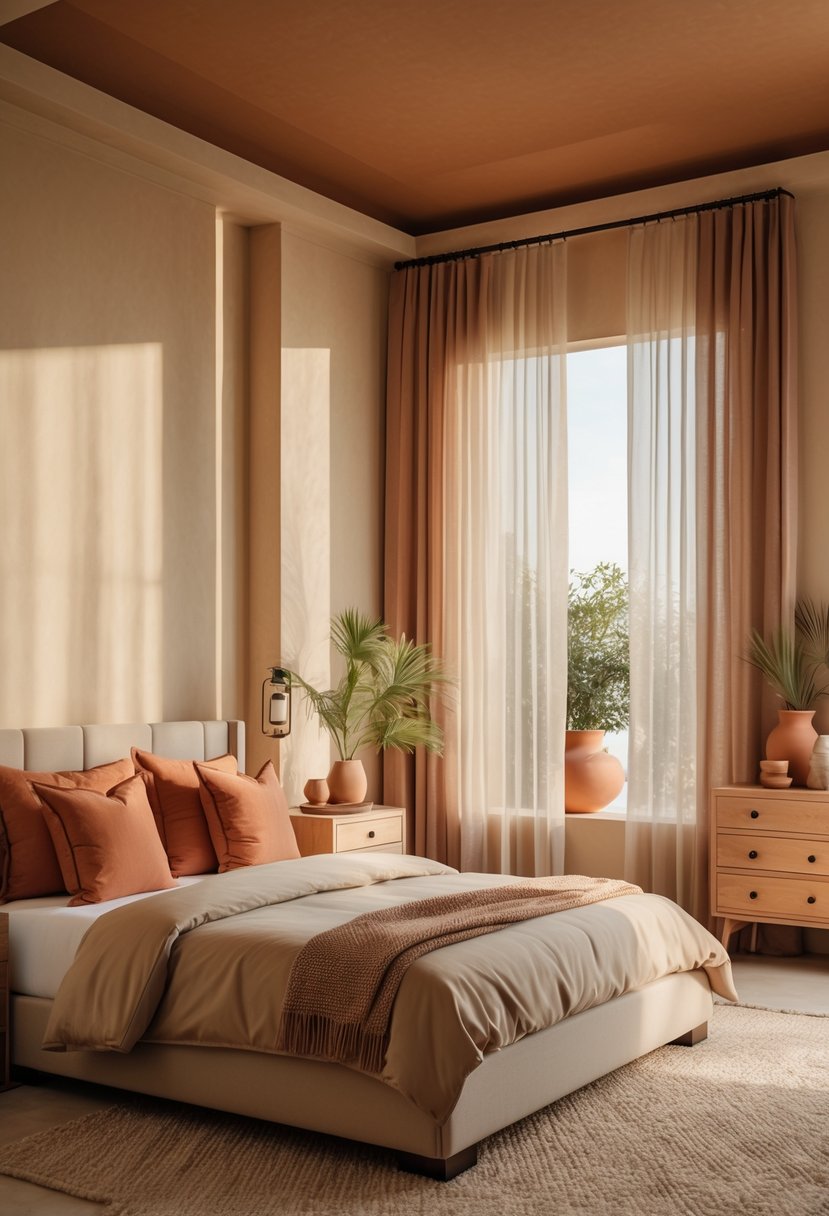
This color pairing creates a grounded and inviting bedroom look.
Beige softens the space, while terracotta adds warmth and depth.
Together, they balance natural tones with simple comfort.
7) Powder Blue and Soft Yellow for Airy Brightness
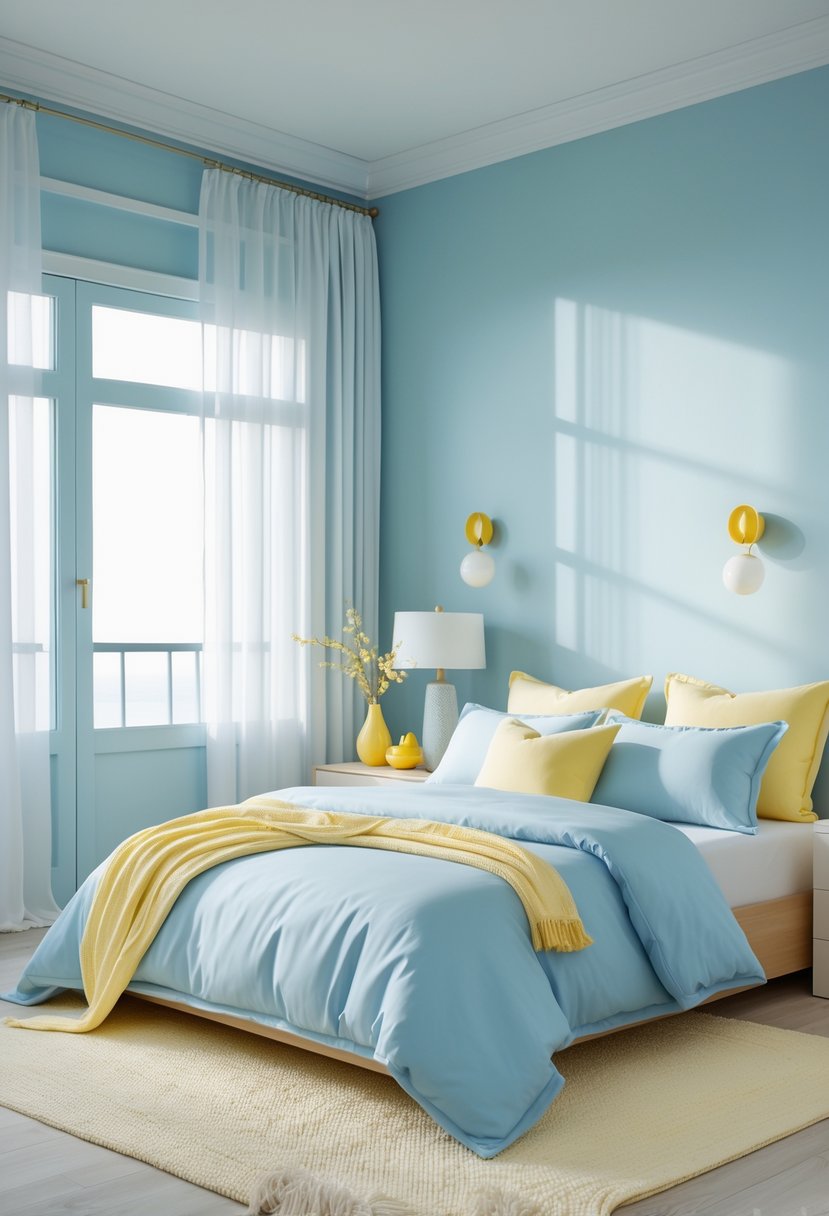
Powder blue walls create a calm base that feels open and light.
Soft yellow accents, like curtains or bedding, add warmth without overwhelming the space.
Together, they form a balanced, airy atmosphere.
Bedroom Color Schemes Ideas For A Stylish And Relaxing Space
8) Rich Burgundy and Gold for Luxurious Depth
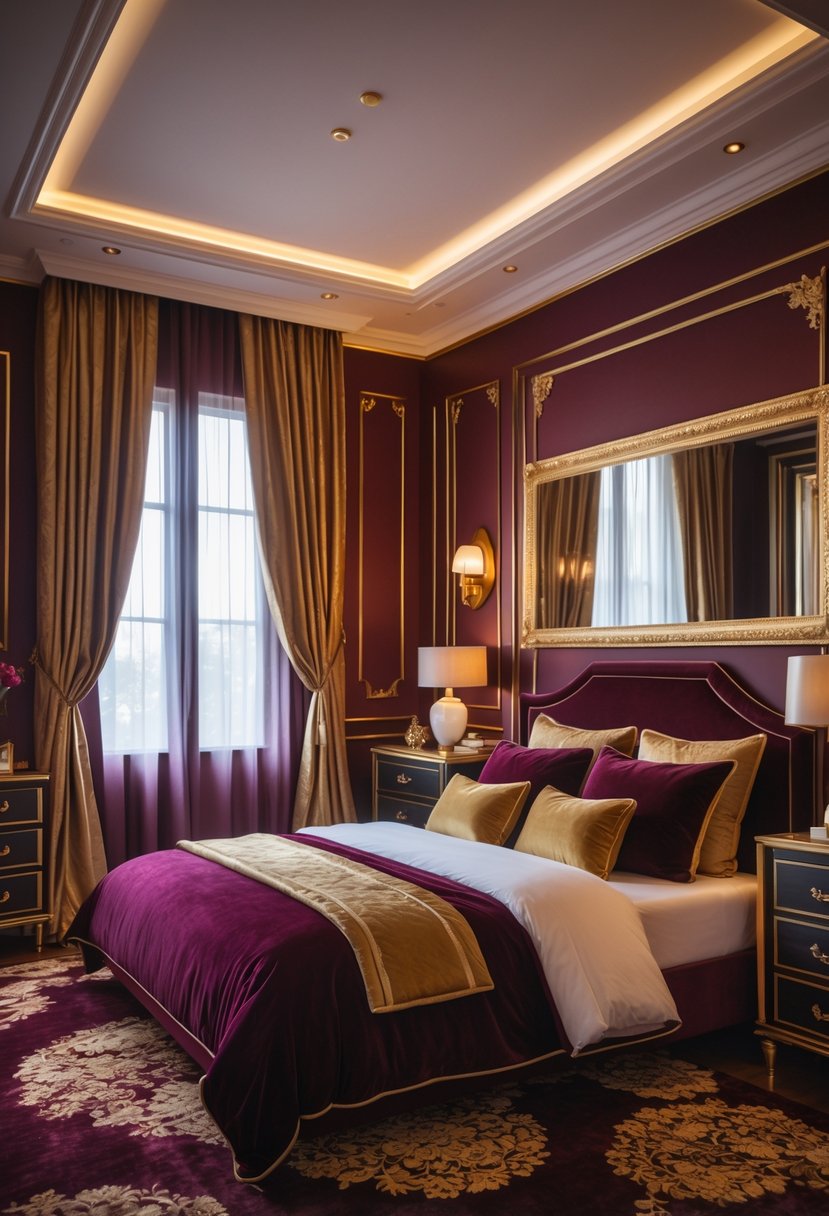
Burgundy adds warmth and depth to a bedroom, creating a rich backdrop.
Gold accents balance the dark tone, bringing light and elegance to the space.
Together, they form a classic and inviting color scheme.
9) Muted Lavender and Pale Gray for Subtle Sophistication
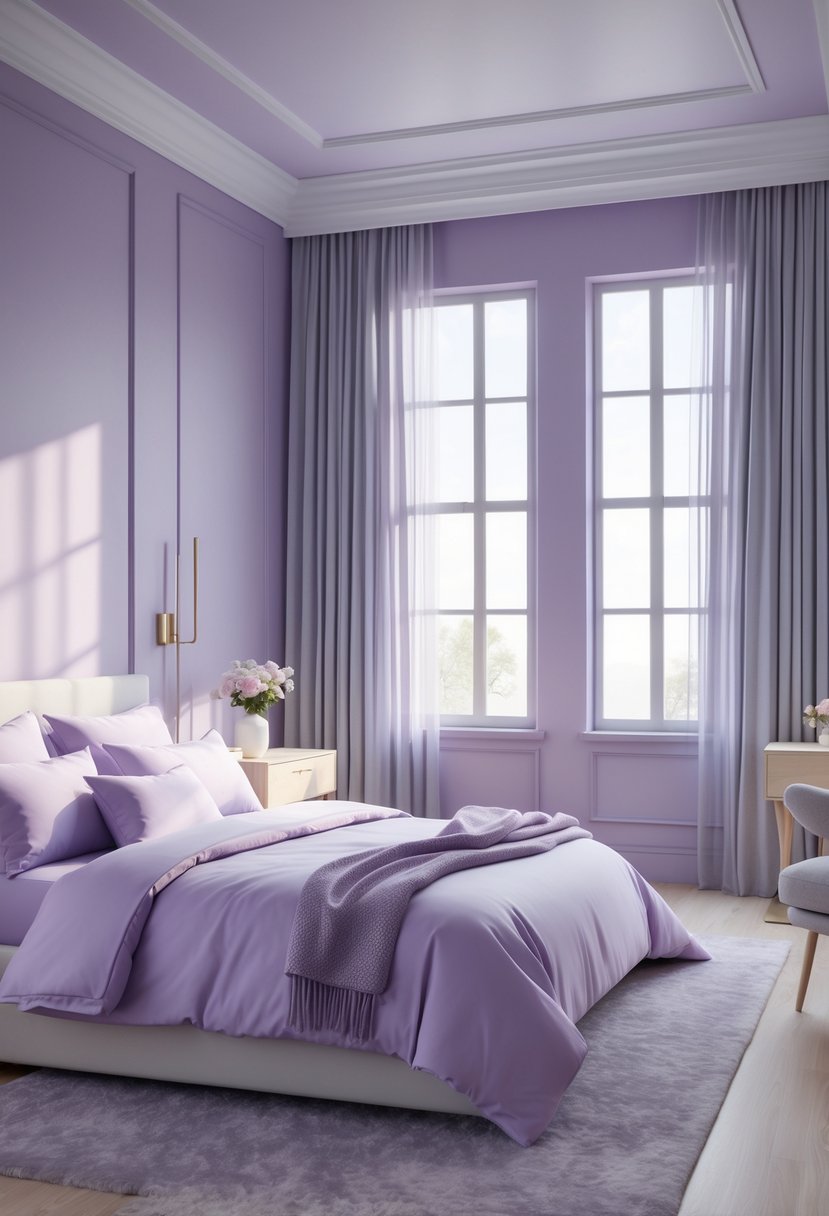
Muted lavender with pale gray creates a calm and balanced look.
This pairing works well in bedrooms designed for relaxation and understated style.
10) Classic Black and White for Timeless Style
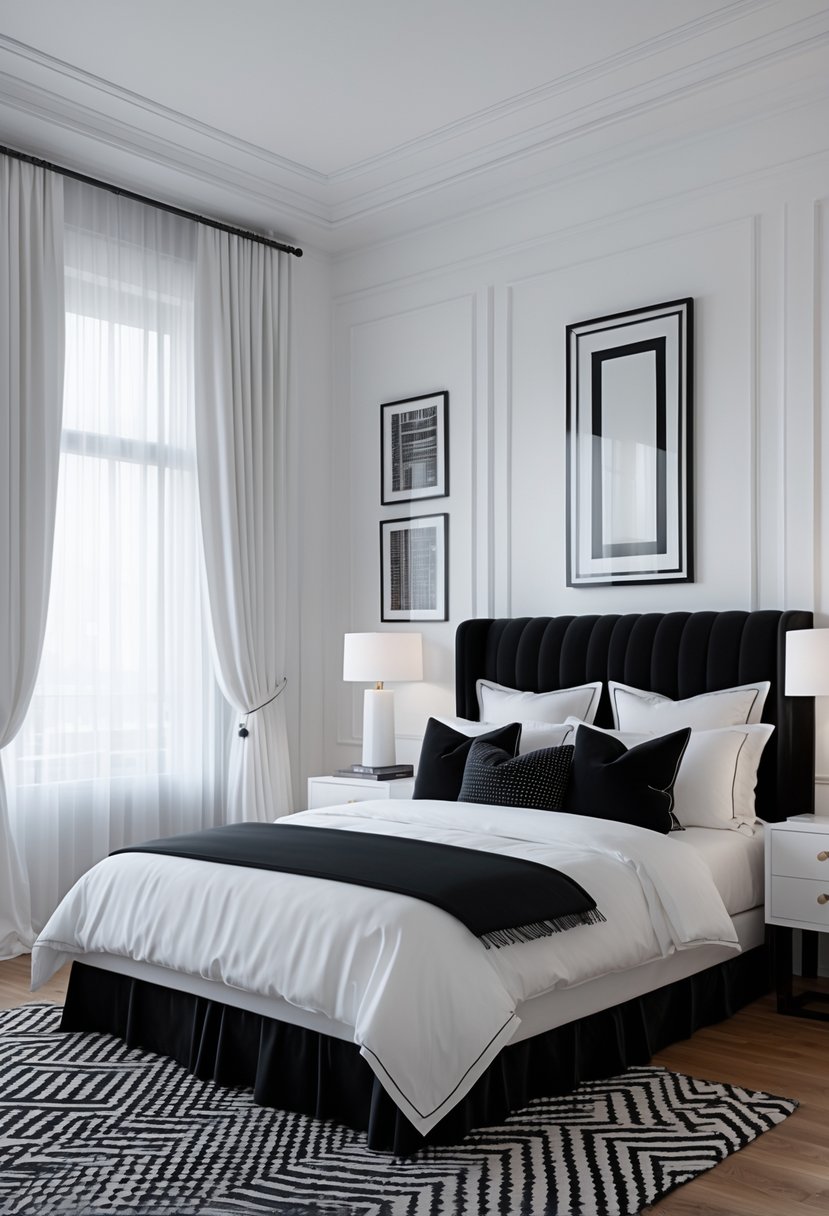
Black and white create a clean, balanced look that works in many bedroom styles. The contrast adds depth without feeling overwhelming.
They can use textures, patterns, or lighting to make the space feel softer or more dramatic. This simple palette stays versatile across modern and traditional designs.
11) Dusty Rose and Olive Green for Vintage Charm
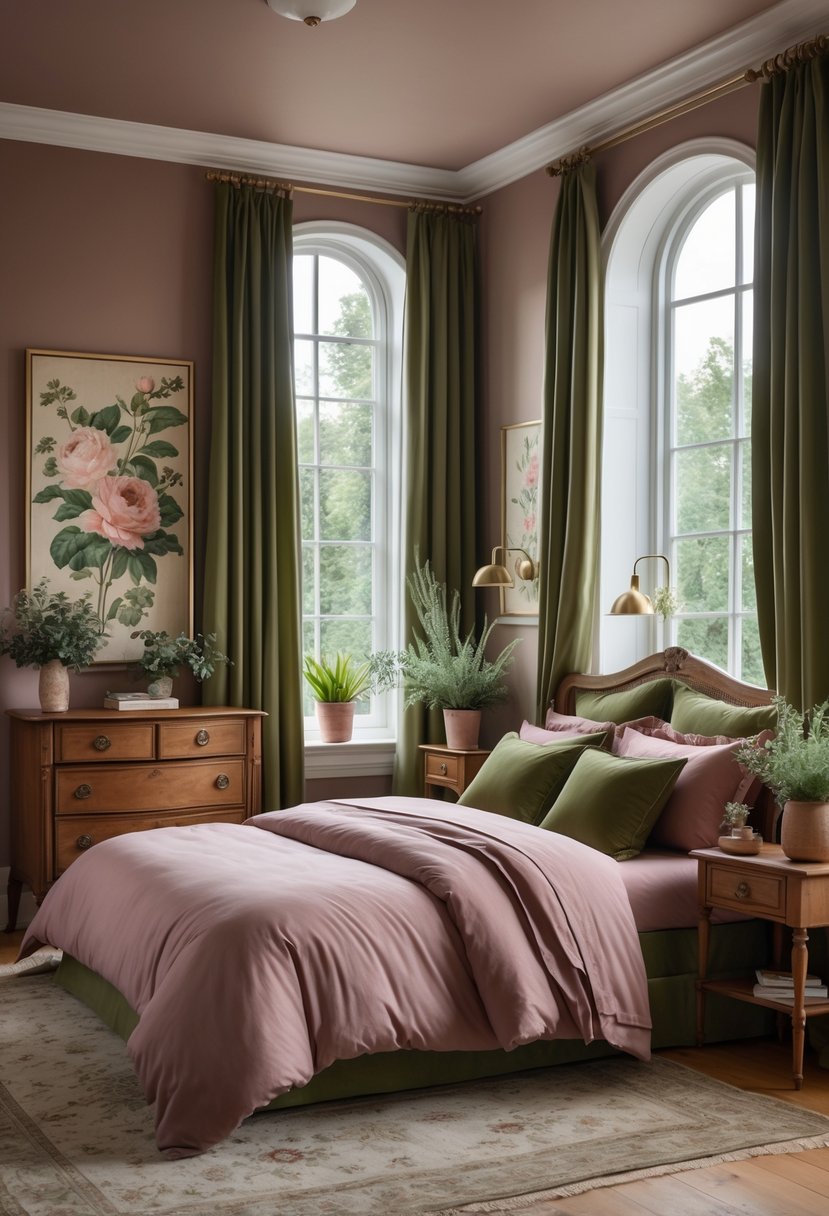
Dusty rose adds a soft, muted warmth that feels calm and inviting.
Olive green brings natural depth and pairs well with vintage furniture or simple wood accents.
Together, they create a balanced, timeless bedroom palette.
12) Cool Mint and Light Wood for Fresh Minimalism
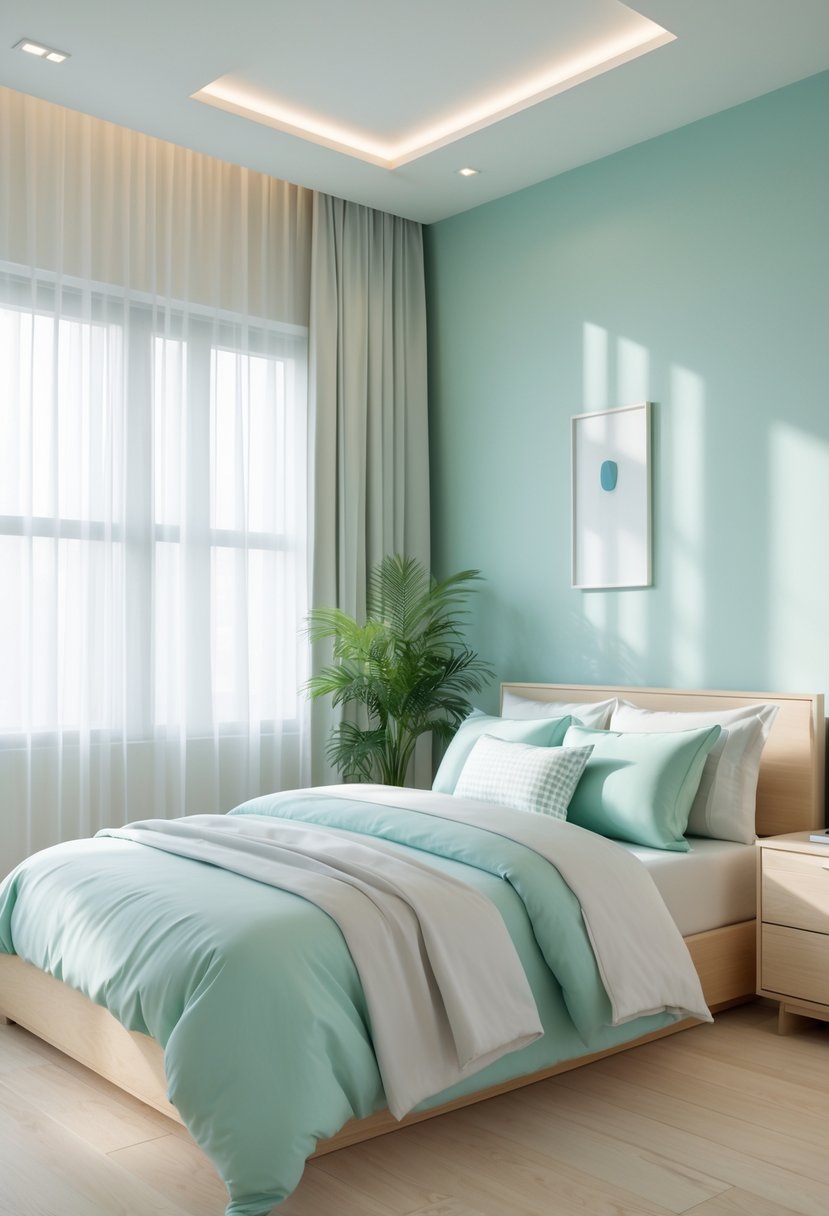
Cool mint walls create a soft backdrop that feels clean and simple.
Light wood furniture adds warmth while keeping the space uncluttered.
Together, they form a balanced look with calm energy.
13) Coral and Aqua for Energetic Vibes
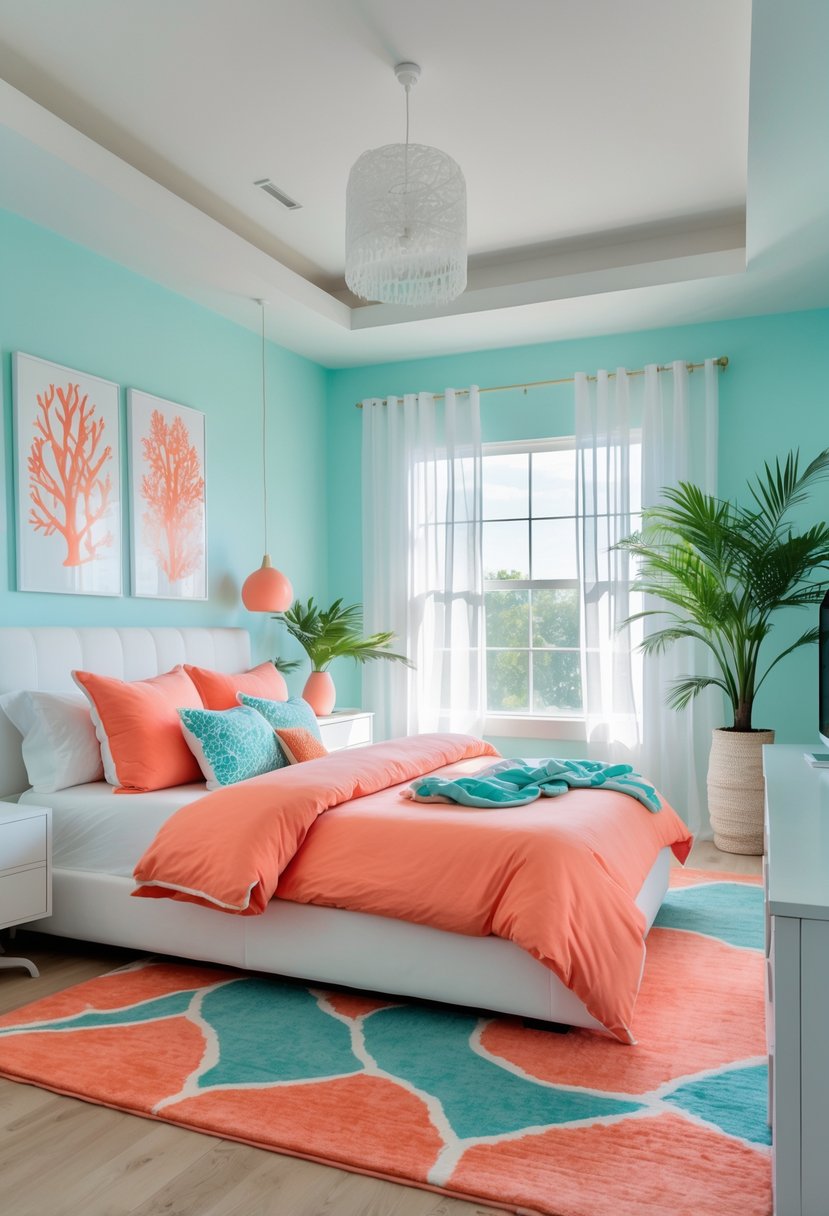
Coral adds warmth and brightness, while aqua brings a cool, calming balance.
Together, these shades create a playful yet relaxed atmosphere in a bedroom.
How Room Size and Lighting Affect Bedroom Color Choices
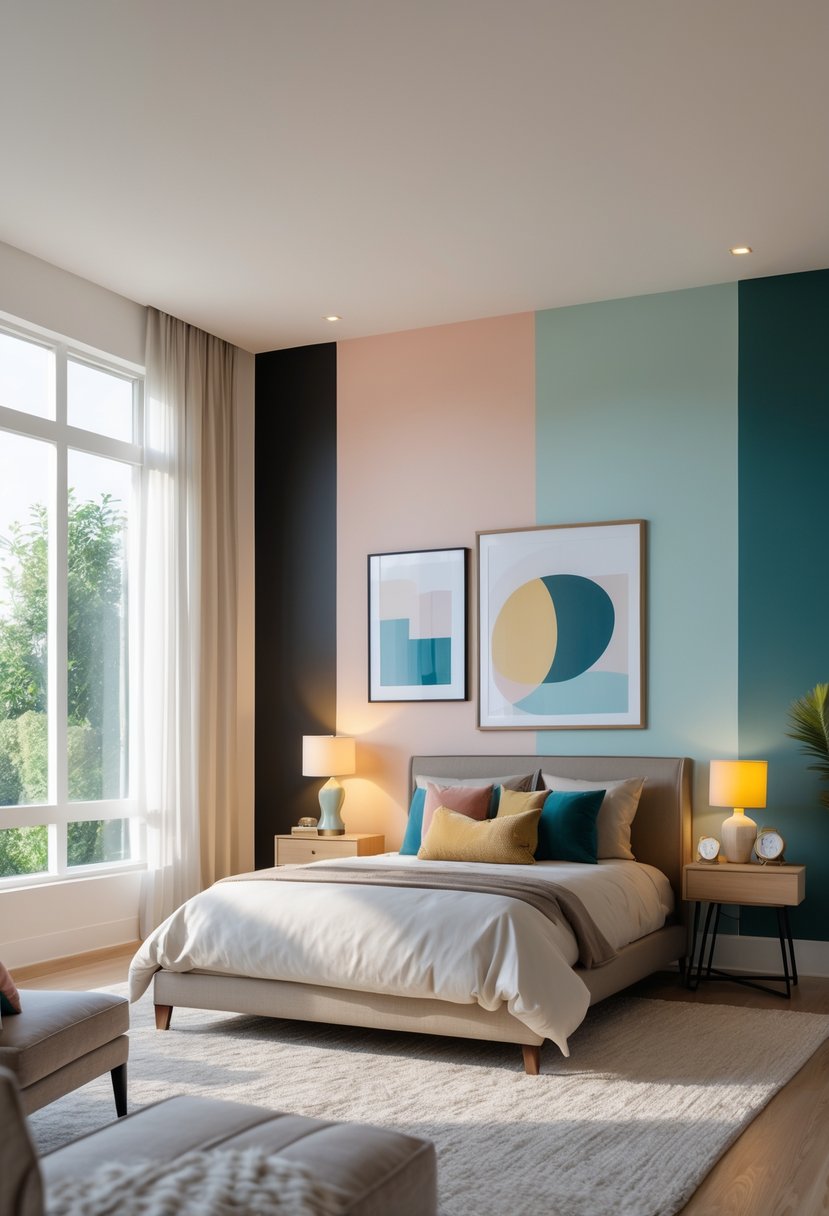
The way a bedroom looks depends heavily on both its size and the type of light it gets. Lighter shades can create the feeling of openness, while lighting changes how colors appear throughout the day.
Maximizing Small Spaces With Color
In smaller bedrooms, color choice can change how large or cramped the space feels. Light, neutral tones such as soft whites, pale grays, or beige help reflect light and make walls seem farther apart. This creates an airy and open effect without needing extra space.
Adding gentle color accents keeps the room from feeling flat. Soft blues, greens, or muted pastels bring personality while still keeping the space calm. These shades balance brightness with subtle character, preventing the room from looking too plain.
Dark colors can work in small rooms, but they need careful use. Pairing a darker accent wall with lighter surrounding walls keeps the space from feeling closed in. Using mirrors and minimal furniture also helps balance the effect of deeper tones.
Quick tips for small rooms:
- Use light paint on walls and ceilings.
- Keep flooring in similar light tones.
- Add contrast with bedding, pillows, or art instead of wall color.
Enhancing Natural and Artificial Lighting
Natural light changes color perception throughout the day. A south-facing room with strong sunlight can handle cooler shades like blues or greens, which prevent the space from feeling too warm. North-facing rooms with less light benefit from warmer tones such as creams, soft yellows, or warm taupes to brighten the atmosphere.
Artificial lighting also changes how colors look. Warm bulbs enhance reds, oranges, and yellows, while cool white bulbs make blues and grays appear sharper. Choosing the right bulb temperature ensures the paint color matches the desired mood.
Placement of lights matters as well. Overhead lighting can cast shadows that darken walls, while lamps and sconces spread light more evenly. Layering different light sources helps maintain consistent color appearance at all times of day.
Lighting guide:
- Warm bulbs (2700K–3000K) → best with warm paint colors.
- Cool bulbs (4000K–5000K) → highlight cool shades like blue or gray.
- Balanced bulbs (3500K) → neutral option for mixed palettes.
Color Psychology and Mood in Bedroom Design
The colors chosen for a bedroom can influence how restful it feels at night and how energizing it feels in the morning. Soft, muted tones often encourage calmness, while brighter or warmer shades can help create a sense of activity and alertness.
Calming Hues for Relaxation
Cool colors such as blue, green, and soft gray are often linked with relaxation. These shades tend to lower visual stimulation, which can help the mind and body slow down before sleep. Lighter tones also make a space feel more open and less crowded, adding to a sense of calm.
Shades of blue are often used in bedrooms because they can reduce feelings of stress. Pale greens, especially those with natural undertones, create a fresh and balanced atmosphere. Soft grays act as a neutral backdrop, keeping the room peaceful without feeling cold.
To make these colors more effective, pairing them with natural textures like wood or linen can enhance the soothing effect. Limiting bold accents and keeping patterns minimal also prevents distraction. This combination helps the space encourage rest and recovery.
Energizing Colors for Morning Motivation
Warm and brighter tones can encourage alertness and energy. Colors such as muted yellow, terracotta, or coral add warmth without overwhelming the senses. These shades can make a room feel welcoming while also supporting a more active start to the day.
Yellow is often associated with optimism and light, making it useful in spaces where natural sunlight is limited. Terracotta and coral add depth and warmth, which can help create a cozy but lively environment. These tones work well on accent walls, bedding, or décor pieces rather than covering the entire space.
Balancing energizing colors with neutrals like beige or off-white keeps the room from feeling overstimulating. Using these shades in moderation ensures they bring motivation in the morning without interfering with rest at night.
Frequently Asked Questions
Color choices in a bedroom can affect mood, sleep quality, and how spacious or cozy the room feels. Current trends focus on soft neutrals, nature-inspired tones, and balanced contrasts that create both comfort and style.
What are the top trending bedroom colors for 2025?
Soft gray, sage green, and muted blues remain popular because they create a calm and restful setting. Warmer tones like terracotta and taupe are also gaining attention for adding depth without feeling overwhelming.
Which two color combinations are popular for bedroom walls currently?
Navy blue with taupe offers a classic and elegant look. Blush pink paired with charcoal is also widely used for a modern yet cozy atmosphere.
What are some modern color schemes for a large bedroom?
Deep teal with mustard works well in larger spaces, as the bold contrast brings energy without making the room feel closed in. Layering soft gray with white is another option that helps a large room feel bright and balanced.
How do I choose the best color for my bedroom walls?
He or she should consider how much natural light the room gets and the mood they want to create. Lighter shades help small or dim rooms feel open, while darker tones can make a large room feel more intimate.
Are there any colors that should be avoided in bedroom design?
Very bright reds and neon shades can feel too stimulating and may interfere with relaxation. Strong contrasts that lack balance can also make the room feel busy rather than restful.
What bedroom color ideas are gaining popularity among couples?
Couples often choose soft neutral palettes like cream and sage for a shared sense of calm. Blush pink with charcoal is also trending, as it combines warmth and sophistication without leaning too heavily toward one style.

